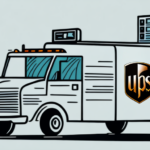Understanding the UPS Chargeback Worldwide Standard
As eCommerce continues to experience significant growth, one challenge that online merchants frequently encounter is chargebacks. Chargebacks can be both costly and time-consuming, prompting many online businesses to seek effective strategies to avoid them. The UPS Worldwide Chargeback Standard is one such framework designed to help merchants minimize these disputes. In this article, we delve into the fundamentals of the UPS Worldwide Chargeback Standard, its implications for eCommerce merchants, and best practices for mitigating UPS chargebacks.
How Chargebacks Affect eCommerce Merchants
Chargebacks occur when a customer disputes a transaction on their credit card statement. Common reasons include fraudulent activity, unauthorized purchases, and dissatisfaction with the product or service. When a chargeback is initiated, the merchant is typically liable for the transaction amount plus any associated fees, which can severely impact profit margins. According to the American Bankers Association, the average cost of a chargeback can exceed $100, not including potential loss of customer trust.
Excessive chargebacks can lead to the termination of a merchant's payment processing account, posing a significant threat to online businesses. To mitigate chargebacks, eCommerce merchants should implement robust fraud prevention measures, such as address verification systems (AVS), requiring CVV codes, and monitoring for suspicious activity. Additionally, enhancing customer satisfaction through clear product descriptions, straightforward return policies, and responsive customer service can reduce the likelihood of disputes.
The Basics of UPS Chargeback Worldwide Standard
The UPS Worldwide Chargeback Standard is a set of guidelines established by UPS to minimize fraudulent activities and other shipment-related issues. This standard encompasses several key areas, including packaging requirements, address verification, and ensuring timely deliveries. Failure to comply with these guidelines can result in chargebacks, where UPS charges the merchant for the cost of the shipment or associated fees.
Compliance with the UPS Worldwide Chargeback Standard is crucial for merchants to avoid unnecessary financial losses and maintain a strong relationship with UPS. Adhering to these standards also enhances customer satisfaction by ensuring that shipments arrive on time and in excellent condition. Merchants can access the comprehensive guidelines for the UPS Worldwide Chargeback Standard on the UPS website.
Why UPS Implemented the Chargeback Worldwide Standard
The UPS Worldwide Chargeback Standard was introduced to guarantee the safe and efficient delivery of shipments globally. With the eCommerce sector continually expanding, UPS recognized the necessity for a unified chargeback standard to address challenges related to package handling, customer experience, and delivery timeliness. This initiative also aims to reduce instances of fraudulent activities, which are prevalent in the eCommerce landscape.
Feedback from customers highlighting inconsistent chargeback policies across different regions prompted UPS to develop a standardized approach. This consistency provides greater transparency in the chargeback process, benefiting both customers and the company. Moreover, the UPS Worldwide Chargeback Standard aligns with UPS's commitment to sustainability by reducing the number of returned packages caused by preventable issues.
How to Avoid UPS Chargebacks
To prevent UPS chargebacks, eCommerce merchants must strictly adhere to the guidelines outlined in the UPS Worldwide Chargeback Standard. This entails ensuring that shipments are adequately packaged, addresses are accurately verified, and deliveries are completed on schedule. Utilizing UPS's tracking and visibility tools allows merchants to monitor shipment statuses in real-time, enabling swift responses to any arising issues.
Additionally, accurately declaring the value of shipped goods is essential. This ensures the correct application of customs duties and taxes, preventing delays or rejections at borders. Merchants should also stay informed about restrictions or regulations applicable to their products, such as hazardous materials or prohibited items, and ensure proper labeling and packaging.
Maintaining open communication with customers throughout the shipping process is another critical factor. Providing tracking information, delivery updates, and promptly addressing any concerns can significantly reduce the likelihood of disputes and chargebacks, fostering a positive reputation for the business.
Common Reasons for UPS Chargebacks
Common causes of UPS chargebacks include missing or incomplete information on shipping labels, incorrect address details, late deliveries, and damaged packages. Fraudulent activities also contribute significantly to chargebacks. Understanding these common issues enables merchants to take proactive measures to mitigate the risk of chargebacks.
UPS chargebacks can lead to substantial financial losses and damage a merchant's reputation. To avoid these outcomes, merchants should ensure all shipping information is accurate and complete, packages are securely packaged, and shipments are dispatched on time. Implementing fraud prevention strategies, such as AVS and card verification codes, further helps in reducing fraudulent transactions and associated chargebacks.
How to Respond to a UPS Chargeback Dispute
If a merchant receives a UPS chargeback, they can dispute it by providing supporting documentation that demonstrates compliance with UPS's guidelines. It's essential to investigate the underlying issues of the chargeback and present evidence of any corrective actions taken to prevent future occurrences. Timely and thorough responses can increase the likelihood of successfully disputing the chargeback and avoiding additional costs.
Chargeback disputes can be labor-intensive, requiring significant effort and resources. Merchants might consider partnering with a chargeback management service to navigate the dispute process effectively and achieve the best possible outcomes.
The Impact of UPS Chargebacks on Business Operations
UPS chargebacks can have a profound impact on business operations. They are not only financially burdensome but also consume valuable time and resources as merchants investigate and respond to each dispute. An excessive number of chargebacks can even lead to the termination of a merchant’s payment processing account.
Improving communication with customers is a strategic approach to mitigating the risk of chargebacks. Ensuring accurate and detailed product descriptions, along with responsive and helpful customer service, can significantly reduce the occurrence of disputes.
Implementing comprehensive fraud prevention measures is another effective strategy. Tools such as address verification, card verification, and fraud scoring can help identify and prevent fraudulent transactions before they result in chargebacks, thereby protecting the merchant’s financial interests and payment processing credentials.
Best Practices for Mitigating UPS Chargebacks
To effectively mitigate UPS chargebacks, merchants should follow UPS's guidelines meticulously regarding packaging, address verification, and delivery. Leveraging UPS's tracking and visibility tools enables merchants to monitor shipments closely and address any issues proactively.
Investigating any incidents that lead to chargebacks and taking corrective actions to prevent similar future occurrences are essential practices. Additionally, selecting the appropriate shipping method for each shipment is crucial. Incorrect shipping methods can cause delays and lost packages, increasing the risk of chargebacks. Merchants should also be aware of special requirements or restrictions, such as those for hazardous materials or international shipments, and ensure compliance to maintain shipping efficiency and reduce chargeback risks.
Maximizing Shipping Efficiency with the UPS Chargeback Worldwide Standard
The UPS Chargeback Worldwide Standard can serve as a valuable tool for merchants aiming to maximize shipping efficiency. By adhering to UPS's guidelines and utilizing their tools, merchants can streamline their shipping processes, minimizing errors that lead to chargebacks. Real-time monitoring through UPS's tracking and visibility tools helps reduce delays and enhance the overall delivery experience for customers.
Moreover, adhering to the UPS Chargeback Worldwide Standard can qualify merchants for discounted shipping rates. Meeting the program’s requirements allows access to lower shipping costs, which is particularly beneficial for small businesses or those with high shipping volumes. These savings can enhance competitiveness in the market and improve profit margins.
Navigating the Complexities of the UPS Chargeback Process
The UPS chargeback process can be intricate and time-consuming. However, by gaining a thorough understanding of the process and implementing best practices for mitigation, eCommerce merchants can reduce their exposure to these costly disputes. Promptly responding to chargeback disputes with comprehensive documentation and evidence of compliance is crucial in securing favorable outcomes.
Expert Insights into the Future of the UPS Chargeback Worldwide Standard
The future of the UPS Chargeback Worldwide Standard is expected to involve increased automation and the integration of advanced data analytics to proactively identify and address potential issues. As the eCommerce landscape evolves, UPS may refine the standard to accommodate emerging trends and challenges. Merchants should stay informed about these developments and continuously align their practices with UPS's guidelines to effectively manage and mitigate chargebacks.
Key Performance Indicators for Measuring Success in the Face of UPS Chargebacks
To gauge the effectiveness of chargeback mitigation strategies, merchants should monitor key performance indicators (KPIs), including:
- The total number of chargebacks received
- The amount of time invested in responding to chargebacks
- The rate of successful chargeback dispute resolutions
Tracking these metrics helps merchants identify areas for improvement and assess the overall effectiveness of their chargeback prevention and management efforts.
Conclusion
The UPS Chargeback Worldwide Standard is an essential framework for eCommerce merchants striving to ensure the safe and efficient delivery of shipments globally. By adhering to UPS's guidelines, utilizing available tools, and promptly addressing any issues, merchants can significantly reduce the risk of costly chargebacks and enhance their business profitability. Understanding the nuances of the UPS chargeback process and staying updated on industry developments are critical steps in maintaining a competitive edge and fostering long-term business success.






















